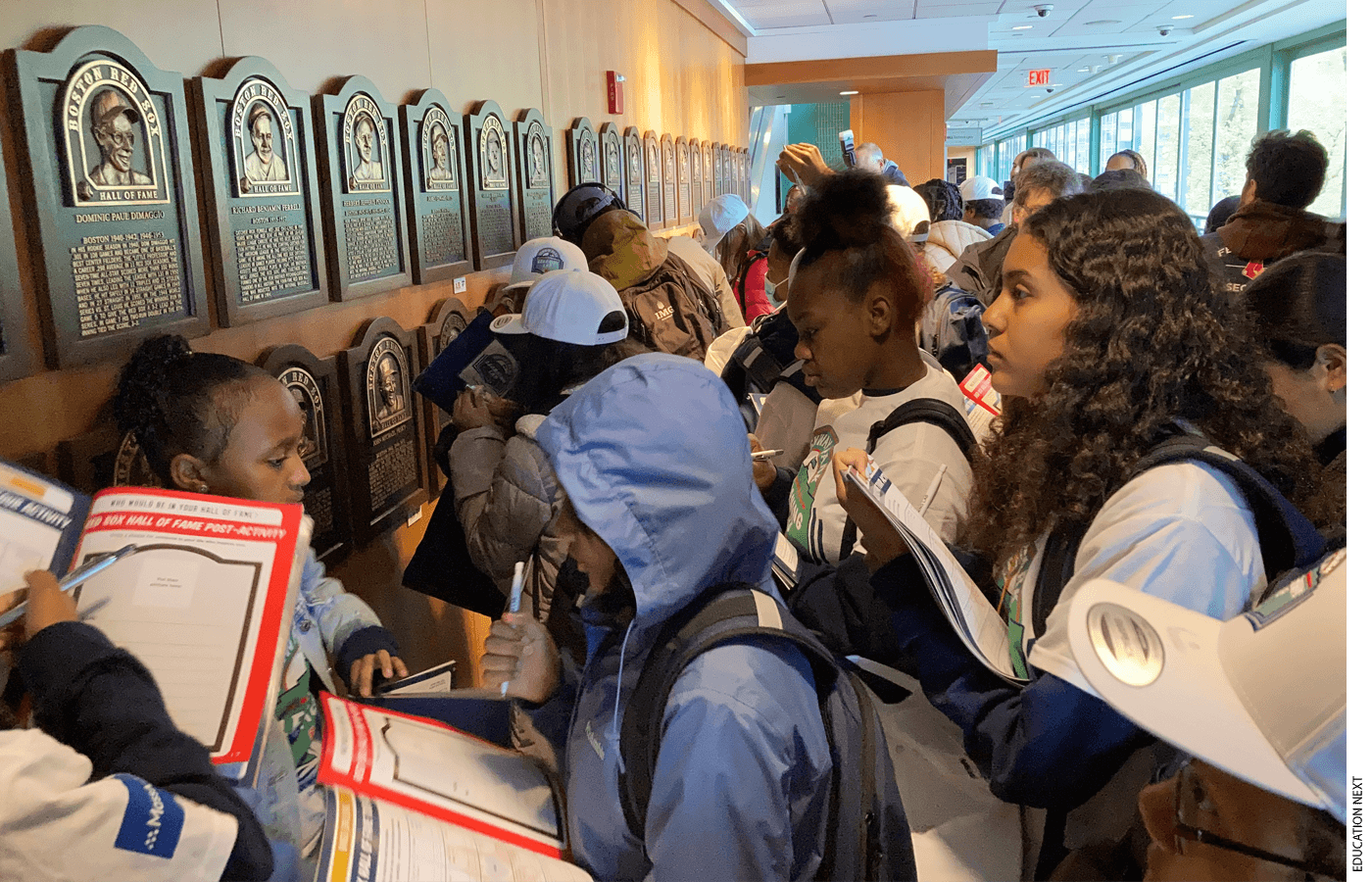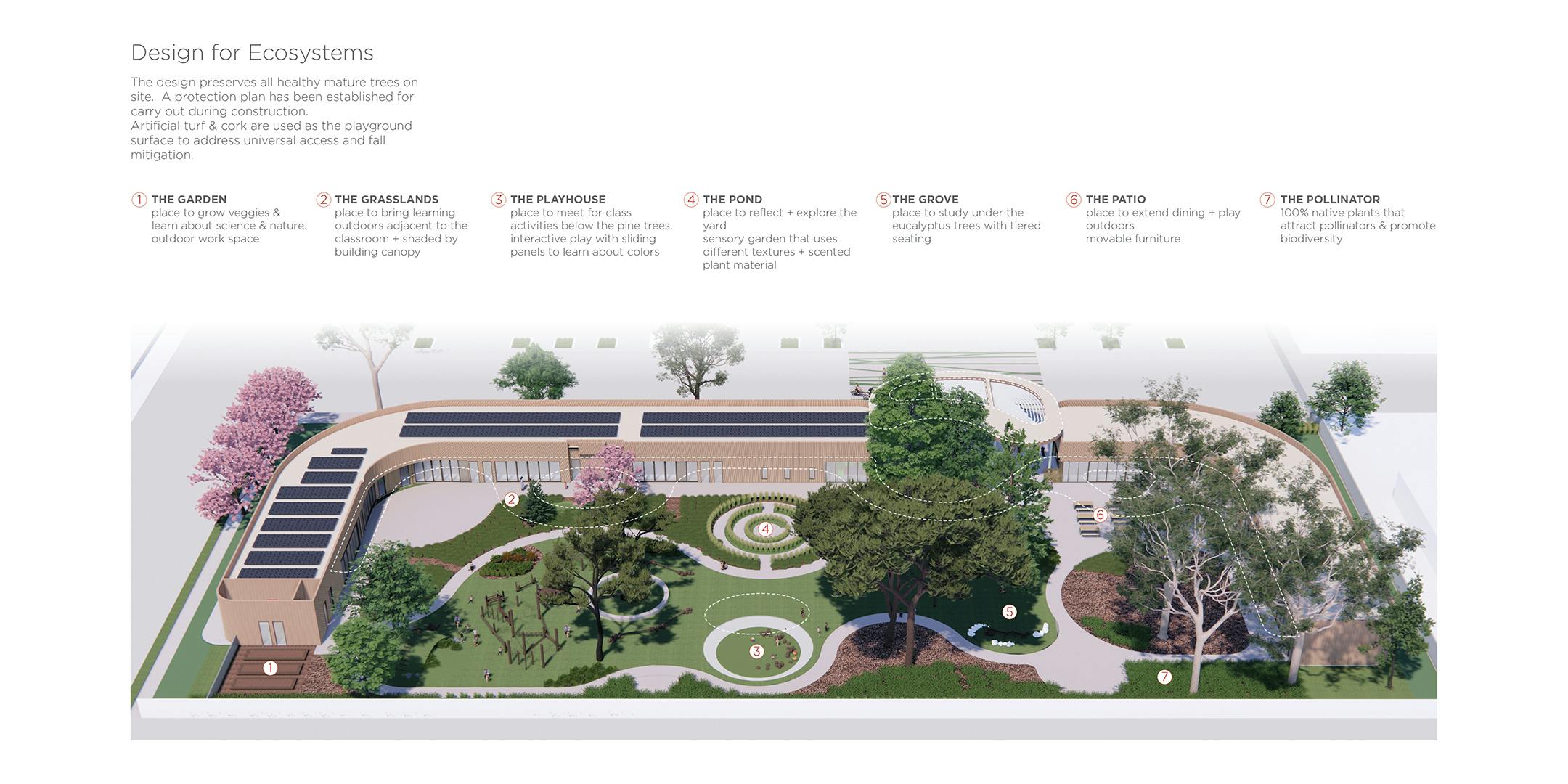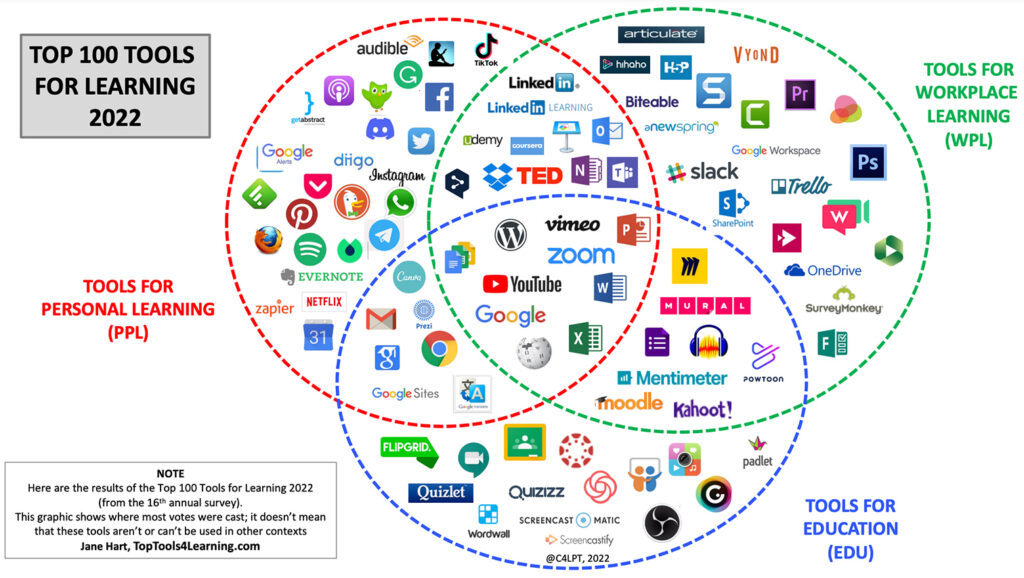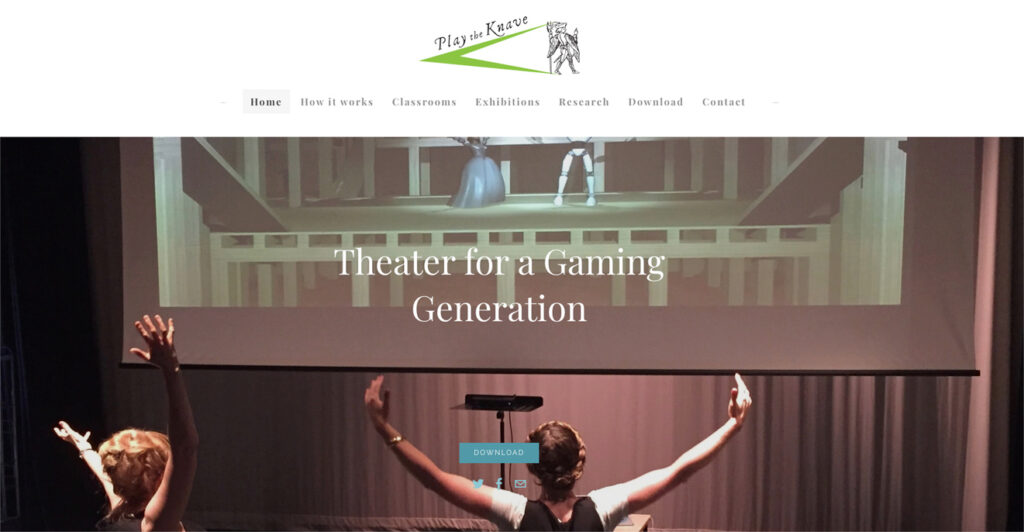DC: Is the future of one of our powerful learning ecosystems more like adding your own desired groups/cohorts, topics, items, etc. to your server? Like a learning-focused type of Discord service? (https://t.co/Vq4dZamBf2)#future #learningecosystems #personalizedlearning pic.twitter.com/wVMWYBN3R1
— Daniel Christian (he/him/his) (@dchristian5) August 17, 2023
‘Guided play’ benefits kids—but what does that look like for parents? — from hechingerreport.org by Jackie Mader
Everyday interactions offer plenty of chances for playful learning
Excerpt:
So, it sounds like if there’s a learning goal that a parent has in mind, the way to do that is to engage in guided play versus setting a kid free to just do what they would like?
Yeah, definitely. So free play is fundamental to anyone’s life, right? We know that it can help social emotional development, physical development, and executive function development. It’s really important. But research is finding when there’s a learning goal, that guided play yields the best results for that. The reason why guided play is so effective is because it reflects these key characteristics of decades and decades of research of how we know how human brains learn best. We know that we learn best when we’re active, not passive, engaged, not distracted, when it’s meaningful, when it’s connected to what matters what we already know. When it’s iterative, so children can test and try out different ideas, and when they’re interacting socially with others, and when they’re joyful. And so that’s part of why guided play is so powerful.
Red Sox Turn Fenway Park into “Learning Lab” for Boston 6th Graders — from by Ira Stoll
“The key to unlock opportunity is education and hard work,” students are told at launch event

Students from the 6th grade at Nathan Hale School complete a “bingo challenge” as part of the Red Sox Hall of Fame stop on their guided tour of the Fenway Park Learning Lab.
Excerpt:
The six-stop tour has students learning history, geography, math, and science. Student visitors get baseball caps, t-shirts, and a backpack full of other souvenir items like baseball cards, binoculars, a calculator, and a pen. The most important piece of equipment may be a 40-page, seriously substantive workbook, developed with the Boston Public Schools, that students work their way through along the hourlong guided tour.
From DSC:
Very interesting.
5 Playful Strategies That Reduce Language Learning Anxiety — from edutopia.org by Paige Tutt
We visited a classroom in Denmark to see how a playful learning philosophy can put students at ease and make language learning joyful and engaging.
Excerpt:
Instead of trying to convince students that their fears aren’t warranted, Belouahi makes a point of creating a positive, mistake-friendly classroom where students feel comfortable experimenting. One of the ways she does this is by incorporating playful learning strategies. “It doesn’t have to be perfect from the beginning,” Belouahi says. “The goal is for them to use their English language as much as possible and as best as they can. Not perfectly.”
Here are five playful learning strategies from Belouahi’s classroom designed to make the act of learning a new language less daunting, and more joyful, social, and engaging.
Also from edutopia.org, see:
- An Innovative Way for High School Students to Take Control of Their Own Learning — by Shelby Scoffield
Giving students a chance to build a project based on a rubric they created can increase engagement and investment.

- 3 Simple Yet Powerful Ways to Build Relationships With Your Students — by Jori Krulder
Use these interactive strategies to build strong relationships with middle and high school students without sacrificing teaching time. - Activating Learning by Milling to Music
When students pretend they’re at a fancy party making small talk, a simple brainstorm for writing ideas becomes more lively, more cooperative—and more effective.
“What does AI know about the playoffs?” ?@jackharlow has plenty of questions for ChatGPT as the #NBAPlayoffs tip off on TNT pic.twitter.com/ywyZz5LsAh
— NBA on TNT (@NBAonTNT) April 16, 2023
From DSC:
I don’t know anything about Jack Harlow. I just liked the idea of the NBA using AI to market the playoffs! I find this piece to be clever and creative. I’m sure we’ll be seeing a lot more of this kind of thing in the future.
A learning ecosystem is composed of people, tools, technologies, content, processes, culture, strategies, and any other resource that helps one learn. Learning ecosystems can be at an individual level as well as at an organizational level.
Some example components:
- Subject Matter Experts (SMEs) such as faculty, staff, teachers, trainers, parents, coaches, directors, and others
- Fellow employees
- L&D/Training professionals
- Managers
- Instructional Designers
- Librarians
- Consultants
- Types of learning
- Active learning
- Adult learning
- PreK-12 education
- Training/corporate learning
- Vocational learning
- Experiential learning
- Competency-based learning
- Self-directed learning (i.e., heutagogy)
- Mobile learning
- Online learning
- Face-to-face-based learning
- Hybrid/blended learning
- Hyflex-based learning
- Game-based learning
- XR-based learning (AR, MR, and VR)
- Informal learning
- Formal learning
- Lifelong learning
- Microlearning
- Personalized/customized learning
- Play-based learning
- Cloud-based learning apps
- Coaching & mentoring
- Peer feedback
- Job aids/performance tools and other on-demand content
- Websites
- Conferences
- Professional development
- Professional organizations
- Social networking
- Social media – Twitter, LinkedIn, Facebook/Meta, other
- Communities of practice
- Artificial Intelligence (AI) — including ChatGPT, learning agents, learner profiles,
- LMS/CMS/Learning Experience Platforms
- Tutorials
- Videos — including on YouTube, Vimeo, other
- Job-aids
- E-learning-based resources
- Books, digital textbooks, journals, and manuals
- Enterprise social networks/tools
- RSS feeds and blogging
- Podcasts/vodcasts
- Videoconferencing/audio-conferencing/virtual meetings
- Capturing and sharing content
- Tagging/rating/curating content
- Decision support tools
- Getting feedback
- Webinars
- In-person workshops
- Discussion boards/forums
- Chat/IM
- VOIP
- Online-based resources (periodicals, journals, magazines, newspapers, and others)
- Learning spaces
- Learning hubs
- Learning preferences
- Learning theories
- Microschools
- MOOCs
- Open courseware
- Portals
- Wikis
- Wikipedia
- Slideshare
- TED talks
- …and many more components.
These people, tools, technologies, etc. are constantly morphing — as well as coming and going in and out of our lives.
In elementary classrooms, demand grows for play-based learning — from hechingerreport.org by Ariel Gilreath
Play supporters point to improved literacy, fewer achievement gaps, and better motor skills for students
Excerpt:
It can be difficult to explain what play-based learning looks like, said Mara Krechevsky, senior researcher at Project Zero, an education research group in Harvard’s Graduate School of Education. Over the past seven years, Krechevsky and her research team have been working on a project called the Pedagogy of Play, studying play-based learning at schools in Boston, Denmark, South Africa and Colombia.
Through their research, Krechevsky’s group came up with three basic tenets for playful learning: students should be able to help lead their own learning, explore the unknown, and find joy. Under this framework, play time doesn’t have to be the reward for completing work and learning. Play can actually be the work, Krechevsky said.
Addendums on 11/20/22:
- Want resilient and well-adjusted kids? Let them play — from hechingerreport.org by Jackie Mader
Research shows play has enormous learning and social benefits across all ages - Play is crucial for middle schoolers, too — from hechingerreport.org by Christina A. Samuels
Adolescents need unstructured time to build connections with other students and learn how to recover after failure - The complex world of pre-K play — from hechingerreport.org by Jackie Mader
Young kids benefit from play. But what should it look like?
The Future Today Institute’s 15th Anniversary Tech Trends Report
Excerpt:
Future Today Institute’s 2022 Tech and Science Trends Report is now available. Downloaded more than 1 million times each year, FTI’s annual Tech Trends Report is a must-read for every industry. Learn the key trends impacting finance, insurance, transportation, healthcare, sports, logistics, telecom, work, government and policy, security, privacy, education, agriculture, entertainment, music, CPG, hospitality and dining, ESGs, climate, space and more. Discover critical insights. See what strategic action you can take on the futures, today.
4 Ways Classroom Design Impacts Executive Functioning — from edutopia.org by Andrew Ayers and Amelia Glauber
Effective classroom design can help elementary students develop skills like organization and task initiation.Excerpt:
Executive functions are process skills that allow us to successfully complete tasks. In any given classroom, there will be a wide range of students with a variety of executive functioning skill levels. These skills include working memory, task initiation, organization, metacognition, inhibition, planning and prioritizing, time management, emotional control, sustained attention, flexibility, and goal-directed persistence.
Also relevant/see:
Designing Classrooms Fit for Early Learners — from edsurge.com by Ozzie Tapia
With deliberate design, learning environments can promote independence, discovery and creativity for early learners.
Excerpt:
Working closely with districts has helped us hone these five strategies, which emphasize how the facility itself can play an active role in the teaching dynamic. When applied effectively, a facility—and the learning spaces inside and around it—becomes a tool for discovery and creative play, which is essential for learners at these early stages of development.
From DSC:
Along the lines of PreK-12th grade learning spaces, I’d like to see more innovations in regards to providing places within classrooms (or within a given facility at least) where students can go who want to/need to block out the cacophony of sites and sounds that may be occurring — in order to help them focus.
Great leaders ask great questions: Here are 3 steps to up your questioning game. — from bigthink.com by Christopher J. Frank, Oded Netzer, and Paul F. Magnone; with thanks to Roberto Ferraro for this resource
Questioning isn’t just a way to get the right answer — it’s also a means for sustaining relationships and creative thinking.
Excerpt:
Building an inquisitive team
One of the best LinkedIn profiles starts with “I am insatiably curious.” What would it take to build a team of insatiably curious, truly inquisitive people? Building an inquisitive culture involves a combination of what and how. The what is a combination of the types of questions previously outlined, and the how is the environment you create. Great leaders create great cultures. There are three basic steps to building an inquisitive culture:
- Start with an open-ended question.
- Respond, don’t react. Embrace silence.
- Ask a stream of questions.
Also relevant/see:
We pose all of our Learning Intentions as questions to further the #InquiryMindset at #CVLittleLynx. This allows our students to recognize that learning is investigating. @Amy_Andersen_ pic.twitter.com/YFJHqf4sSQ
— Melissa Taylor (@mtaylor422) October 11, 2022
This week’s sketch: the 1o Characteristics of the Inquiry Classroom.
Reflect on your own practice.
Which of these are strengths?
Which of these are stretches?
What are your next steps?#inquirymindset pic.twitter.com/jHu4gqlbGz
— Trevor MacKenzie (@trev_mackenzie) October 17, 2022
For some time I’ve been researching this: what are the conditions in which learning thrives?
My observations…
?Agency
?Curiosity
?Play
?Guidance
?Self-regulation
?Exploration
?Empathy
?Time
?Compassion
?Voice#InquiryMindset #DiveintoInquiry #inquiry #aussieED pic.twitter.com/XVYCFLTje3— Trevor MacKenzie (@trev_mackenzie) November 20, 2019
Addendum on 10/29/22:
Innovation starts with the quality of your questions — from edte.ch by Tom Barrett
In the final publication of the October throughline we explore how to build a culture of innovation one question at a time.
Snapshot
A quick synthesis of this issue to share
- Innovation starts with the quality of your questions. Asking the right questions leads to new possibilities and innovative solutions.
- We are often drawn to ideas because we want to fix problems; starting with an idea feels safe and more fun than starting with a problem.
- If we want an innovative culture in our teams, we need to start with questions instead of ideas.
- Trust and psychological safety create the culture for collective negative capability, which John Keats coined as “the ability to live with ambiguity and uncertainty.”
- Commit to action by being aware of your need for certainty, make space for ambiguity and uncertainty in development work, and build trust by encouraging questions.
Top tools for learning 2022 — from toptools4learning.com by Jane Hart
Excerpt:
In fact, it has become clear that whilst 2021 was the year of experimentation – with an explosion of tools being used as people tried out new things, 2022 has been the year of consolidation – with people reverting to their trusty old favourites. In fact, many of the tools that were knocked off their perches in 2021, have now recovered their lost ground this year.
Also somewhat relevant/see:
- Tech & Learning Names Winners of the Best for Back to School 2022 Awards — from techlearning.com
The best education technology tools and solutions for back to school 2022
From DSC:
The following two items make me wonder how Extended Reality (XR)-related techs will impact theatre, gaming, opera, & other forms of entertainment.
AR Opera Glasses Could Change Broadway Forever — from vrscout.com by Kyle Melnick
Excerpt:
Immersive technology brings the stage to life like never before.
Students from the South Korean Hongik University have developed a pair of reimagined 19th-century opera glasses that utilize AR technology to immerse spectators in Broadway shows in a variety of unique and imaginative ways. The device is compatible with popular shows such as Wicked, Aladdin, Cats, Mamma Mia, and Frozen.
Reddot_Rene from ???/??????? on Vimeo.
What ‘Shakespeare Karaoke’ Teaches About the Virtual Reality Future — from edsurge.com by Rebecca Koenig
Does technology work better as a solo encounter or a group experience?
Excerpt:
To immerse, or not to immerse?
For professors designing virtual reality versions of Shakespeare’s plays, that is the question. The answer(s) may have implications for designing new edtech tools—and VR technology intended to be used beyond the classroom, too.
The Bard’s masterpieces, plays written in the late 1500s and early 1600s, have received all kinds of digital makeovers in the 21st century. Two current efforts designed by academics for use in teaching draw on extended reality tools that invite users to actively participate in scenes from works like “Romeo and Juliet.”
Play the Knave is a video game that helps users design actor-avatars they can direct with their bodies around virtual theater spaces. Shakespeare-VR is a project-in-development that will enable users to don a VR headset, step on to a virtual Elizabethan stage and perform alongside avatars voiced by professional actors.
Survey Shows Teachers See Play and Choice in Learning Methods As Key to Student Engagement — from thejournal.com by Kristal Kuykendall
Excerpt:
A recent survey of teachers by Kahoot reveals that educators see playful learning and student choice in learning methods as vital to helping boost student engagement and outcomes, according to a new report from the ed tech company.
Kahoot’s May survey of over 8,000 K–16 educators nationwide found that teachers are still concerned about drops in student engagement during the pandemic, and they consider more student-centered approaches as the path forward.
The future of video entertainment: Immersive, gamified, and diverse — from mckinsey.com
“There’ll be a blurring of the lines between things we watch and things we play”
Slido Lesson Plan — from techlearning.com by Stephanie Smith Budhai, Ph.D.
This Slido Lesson Plan is designed to help educators implement the digital tool into their instruction
Excerpt:
Slido is an exciting online engagement edtech tool that can be used to connect all students with academic content while getting them involved in the lesson.
While Slido is often used to incorporate polling into virtual workshops and presentations, there are a wide range of student engagement features within the Slido platform that can be used by teachers during lessons.
Also see:













